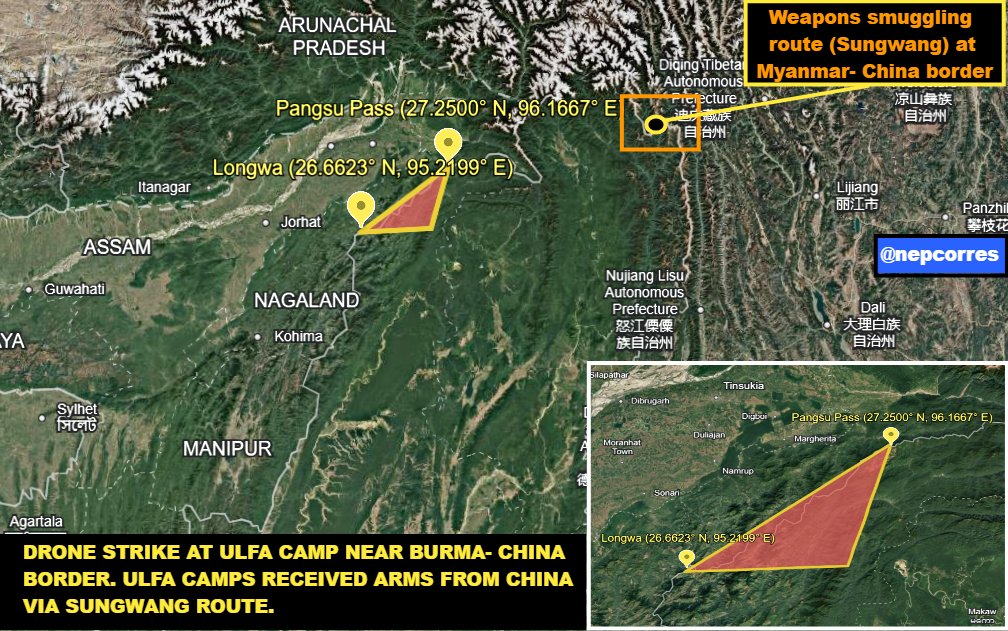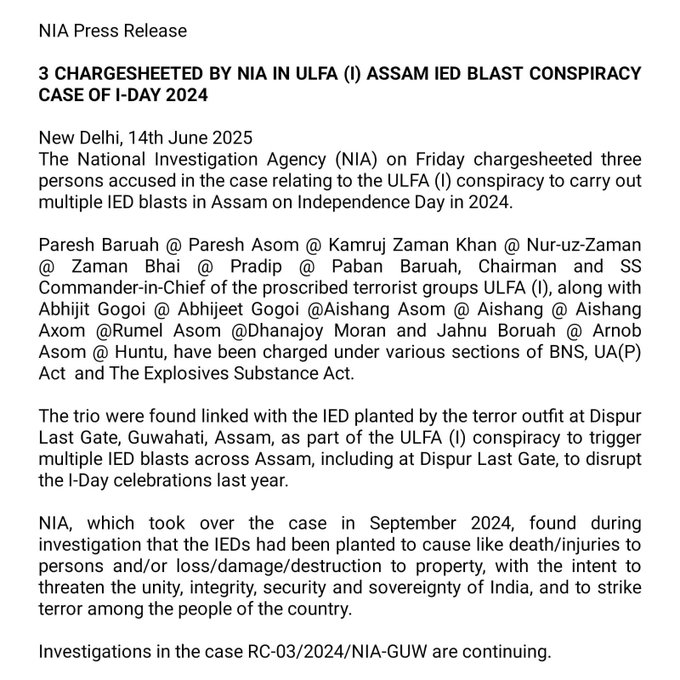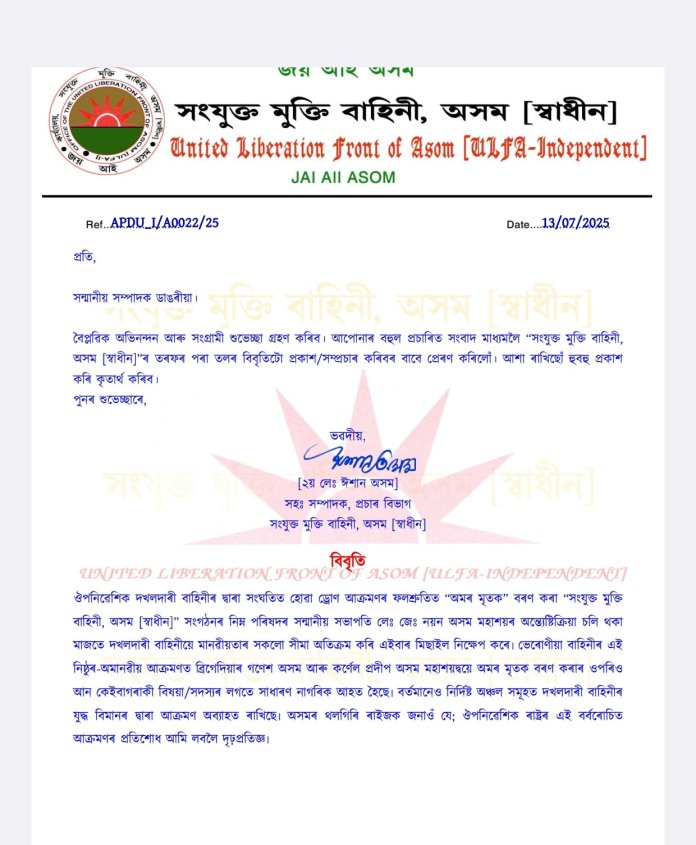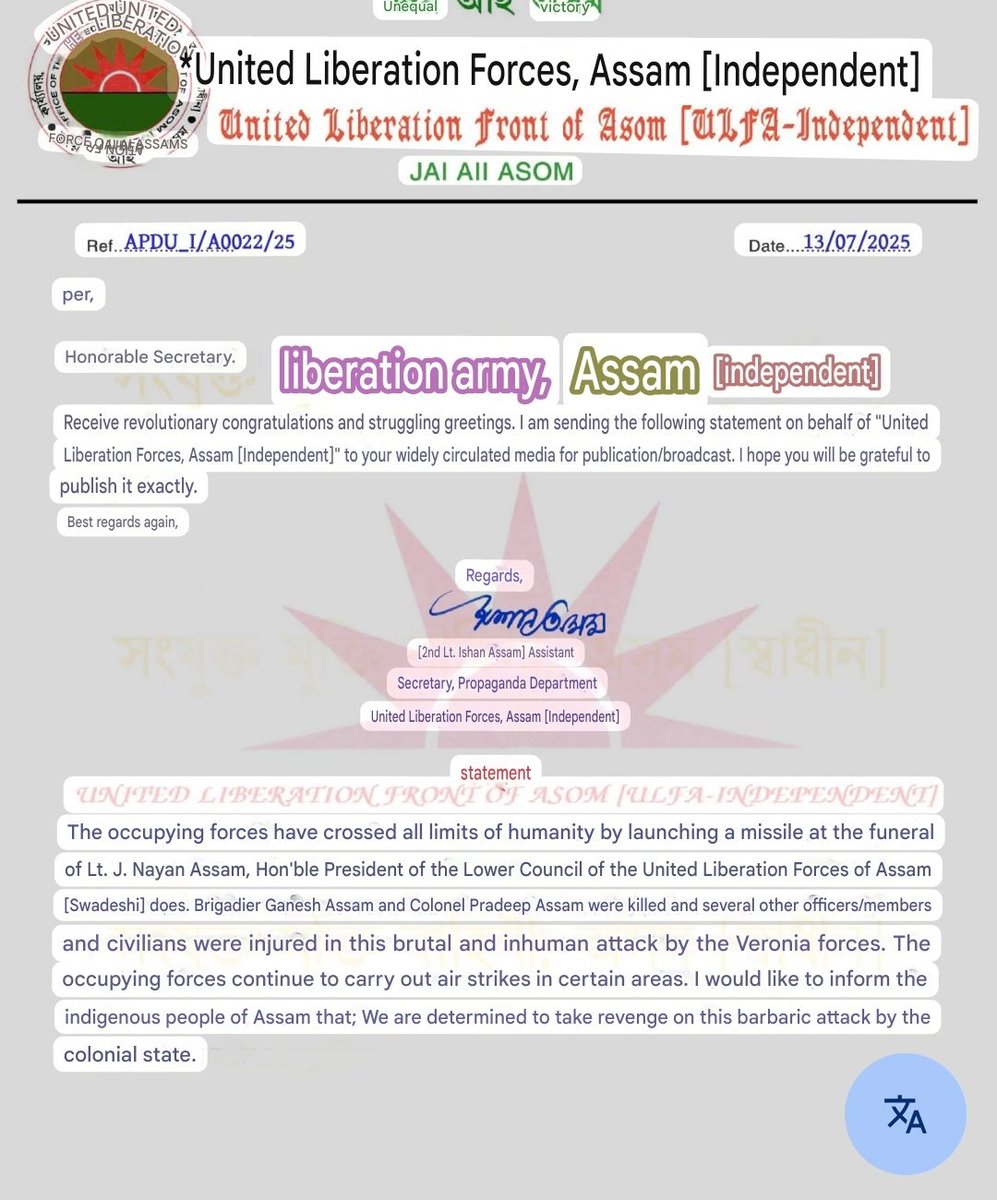Over 150 drones were deployed in a sweeping pre-dawn operation by the Indian Army targeting insurgent camps of the ULFA-Independent and NSCN(K) deep inside Myanmar’s Sagaing Region, marking one of the most significant cross-border offensives in recent years.
According to intelligence and defence sources, the strikes, launched between 2 am and 4 am on Sunday, focused on rebel hideouts in Waktham and Hoyat bastis, known safe havens of the United Liberation Front of Asom (Independent). The operation is believed to have been executed in close coordination with Myanmar’s military.
The Indian Army's drone strikes on Sunday reportedly targeted insurgent locations situated along the volatile Myanmar-China border. The precision operation focused on a corridor between Longwa (26.6623° N, 95.2199° E) on the Nagaland–Myanmar border, and Pangsu Pass (27.2500° N, 96.1667° E) on the Arunachal Pradesh–Myanmar border, a known stretch used frequently by insurgent groups.

Intelligence sources also claim that since January 2025, Pakistan’s ISI has been actively backing ULFA-I. A key meeting between Paresh Barua and ISI operatives was reportedly held in Chittagong on 23 January. Pakistani-supplied arms allegedly reached ULFA camps soon after, raising concerns about cross-border destabilisation in India’s Northeast.
Separately, field sources allege that several Bangladeshi food companies operating in Assam and neighbouring regions have been covertly financing ULFA-I cadres.
Earlier this year, on 26 January, ULFA-I carried out two low-intensity IED blasts in Guwahati, one near Lalmati in Beharbari and another at Rehabari. The outfit claimed responsibility the following day, framing it as a protest against India’s Republic Day celebrations.

Also read: ULFA-I claims planting 24 bombs across Assam, police search
Meanwhile, Defence inputs from Myanmar suggest that the aerial offensive deployed drones manufactured in Israel and France, with pinpoint strikes launched on camps belonging to ULFA-I, NSCN(K), and RPF/PLA.
The high-altitude, forested terrain around Myanmar’s Sagaing Region, particularly in the Naga Self-Administered Zone served as the focal point of the military action. Over 100 drones are believed to have been used in the operation.
The assault reportedly eliminated key figures within the ULFA-I hierarchy. “As many as 19 cadres of the outfit were injured, self-styled majer general Nayan Asom, chairman of the lower council of the recalcitrant outfit, was killed in the attacks,” the outfit itself confirmed in a statement issued to media houses.
According to sources, Nayan Asom, whose real name is Nayan Medhi, was leading the group’s Eastern Command Headquarters (ECHQ) at Hoyat Basti. Known as a central military trainer and strategist, his elimination is being viewed as a substantial blow to the insurgent outfit’s command structure.
ULFA-I, in its official statement, claimed that Brigadier Ganesh Asom and Colonel Pradip Asom were killed in a missile strike that followed the reported air raid on its camps, which it said was still ongoing. The outfit vowed to retaliate for the attack.


The Waktham Basti, which houses the 779 Camp of ULFA-I, was among the first to be struck. Although five cadres were reportedly inside at the time, no injuries or fatalities have been confirmed from that location.
In addition to ULFA-I targets, several positions of the NSCN(K) were also bombarded. Preliminary intelligence inputs suggest multiple casualties, although the figures are yet to be officially verified.
Indian Army denies role
However, Lieutenant Colonel Mahendra Rawat, Defence PRO in Guwahati, denied any role of the Indian Army in the alleged operation.
“The Indian Army has no inputs on any such operation,” Lt Col Rawat said.
Assam Chief Minister Himanta Biswa Sarma clarified that the Assam Police had no role in the operation. “Assam Police is not involved in the attacks launched on ULFA-I camps in Myanmar and the attacks were also not launched from within the boundary of Assam,” he told reporters in Uriamghat, Golaghat district. “We are expecting a statement from the Indian Army.”
Security analysts consider the strikes as a strong signal of India’s renewed counter-insurgency push, particularly in response to a surge in militant activity in the Northeast over the past year. ULFA-I and NSCN(K) have historically used Myanmar’s dense, ungoverned jungle terrain along the border as operational sanctuaries.
No official comment has been issued by the Ministry of Defence or the Myanmar government as of the time of filing this report.





